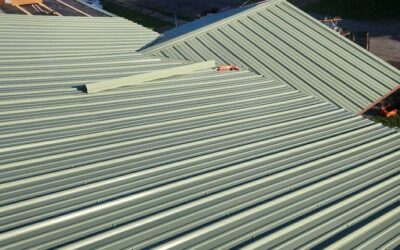How Roof Boots Can Help Your Roof: The Essential Guide to Roof Protection and Durability
When it comes to maintaining the integrity and longevity of your roof, there are several key components that help ensure it performs well over the years. One such component, often overlooked by homeowners, is the roof boot. Roof boots are a vital part of your roofing system that can make a huge difference in preventing leaks, water damage, and other common roofing issues. In this comprehensive guide, we’ll delve deep into what roof boots are, why they’re important, how they work, and how choosing the right roof boot can help keep your roof in optimal condition for years to come.
What Are Roof Boots?
Roof boots, also known as plumbing boots or vent boots, are protective components installed around roof vents, pipes, and other protrusions in your roofing system. These boots help create a watertight seal around the penetration points where pipes or vents emerge from the roof. Without proper sealing, these penetrations can become entry points for rainwater, snow, and moisture, leading to leaks and potential damage to your roof structure.
Typically made from rubber, silicone, or other durable weather-resistant materials, roof boots are designed to provide long-lasting protection against the elements. They are installed over the pipe or vent and sealed tightly to prevent water from seeping into your home. Roof boots come in different shapes and sizes, depending on the size and type of pipe or vent they are meant to seal.
Why Are Roof Boots Important?
Roof boots are crucial for the protection of your home for several reasons:
1. Preventing Water Damage
Water infiltration is one of the leading causes of roof damage. When a roof boot is properly installed and sealed, it prevents water from entering the roof cavity around pipes and vents. Over time, the lack of protection in these areas can lead to water damage, rotting of roofing materials, and the growth of mold and mildew. Roof boots ensure that the openings around pipes or vents remain sealed, preventing moisture from entering and causing costly damage.
2. Protecting Against Ice Dams
In colder climates, ice dams can form on your roof during the winter months. Ice dams occur when melting snow refreezes at the edges of the roof, blocking water from draining properly. This water can back up under shingles and flow into the attic, causing damage. Roof boots help prevent water from collecting around pipe penetrations, reducing the risk of ice dams forming and causing damage to your roof.
3. Extending Roof Lifespan
A roof that is properly sealed and protected from the elements will last longer. Roof boots help maintain the integrity of your roofing system by preventing water infiltration, which can cause materials to degrade over time. By installing high-quality roof boots and ensuring they are in good condition, you can help extend the lifespan of your roof, saving you money on premature repairs or replacements.
4. Improving Energy Efficiency
When water enters your roof system, it can damage the insulation and affect your home’s energy efficiency. Wet insulation loses its ability to regulate temperature, forcing your heating and cooling systems to work harder. Roof boots help prevent water from damaging insulation, ensuring that your home remains energy-efficient and comfortable throughout the year.
5. Enhancing Roof Aesthetics
Roof boots not only protect your home but also contribute to its overall appearance. Roof boots are designed to blend seamlessly with your roofing material, whether it’s shingles, metal, or tile. By choosing the right roof boot for your roof type and ensuring proper installation, you can keep your roof looking clean and well-maintained.
Common Types of Roof Boots
Roof boots come in a variety of types, each designed for specific applications. Choosing the right roof boot for your needs is crucial to ensuring long-lasting protection for your roof. Below are some of the most common types of roof boots:
1. Rubber Roof Boots
Rubber roof boots are the most commonly used type of roof boot due to their durability, flexibility, and ease of installation. These boots are made from a flexible rubber material, often EPDM (Ethylene Propylene Diene Monomer), which is highly resistant to the elements. Rubber roof boots are designed to fit snugly around pipes and vents, creating a watertight seal. They are typically used for plumbing vent pipes and other smaller penetrations on the roof.
- Advantages: Durable, flexible, affordable, and easy to install.
- Disadvantages: May degrade over time due to UV exposure, especially if not properly maintained.
2. Metal Roof Boots
Metal roof boots are typically made of aluminum or galvanized steel and are used on metal roofing systems. These boots are designed to provide a more rigid and durable seal around pipes and vents compared to rubber boots. Metal roof boots are known for their long lifespan and resistance to weathering, making them ideal for areas with extreme temperatures or heavy rainfall.
- Advantages: Durable, long-lasting, ideal for metal roofs.
- Disadvantages: More expensive and can be harder to install than rubber boots.
3. Aluminum and Stainless Steel Boots
Aluminum and stainless steel boots are designed for use with high-performance roofing systems. These materials are known for their resistance to corrosion, making them ideal for areas with salty air or harsh weather conditions. Aluminum and stainless steel boots often come with a protective coating to further enhance their longevity and weather resistance.
- Advantages: Corrosion-resistant, durable, long-lasting.
- Disadvantages: Expensive compared to other roof boots.
4. Silicone Roof Boots
Silicone roof boots are made from high-quality silicone rubber, which is known for its flexibility and weather-resistant properties. These boots are ideal for extreme temperatures and provide a strong, long-lasting seal that won’t crack or degrade over time. Silicone boots are often used for commercial and residential roofing systems where durability is a top priority.
- Advantages: Long-lasting, highly flexible, resistant to extreme temperatures.
- Disadvantages: More expensive than rubber boots.
5. Universal Roof Boots
Universal roof boots are designed to fit a wide variety of pipe sizes and roofing materials. These boots are ideal for homeowners who want a flexible and versatile option for their roofing system. Universal roof boots typically come with an adjustable collar that can fit different pipe diameters, making them a great choice for DIY installations.
- Advantages: Versatile, easy to install, cost-effective.
- Disadvantages: May not provide the same level of custom fit as boots designed for specific pipe sizes.
How Roof Boots Are Installed
The installation of roof boots is a relatively straightforward process, but it’s important to follow the proper steps to ensure a secure and watertight seal. Below is a step-by-step guide on how roof boots are typically installed:
1. Prepare the Area
Before installing the roof boot, it’s important to clean the area around the pipe or vent. Remove any debris, dirt, or old roofing materials to ensure a smooth surface for the new boot. If the old boot is damaged or worn out, carefully remove it before proceeding with the installation.
2. Choose the Right Size Boot
Select the appropriate size roof boot for your pipe or vent. Ensure that the boot is large enough to cover the entire area around the pipe but not so large that it doesn’t fit snugly against the roof. If you’re using a universal boot, adjust the collar to fit the diameter of your pipe.
3. Apply Sealant (Optional)
While many roof boots come with a pre-installed seal, it’s often a good idea to apply an additional layer of roofing sealant around the edge of the boot to ensure a watertight seal. This is particularly important in areas with heavy rainfall or freezing temperatures.
4. Install the Boot
Slide the roof boot over the pipe or vent and ensure that it fits snugly against the roof. The boot should cover the area around the pipe, leaving no gaps where water could seep in. Secure the boot with nails or screws (depending on the manufacturer’s instructions), being careful not to damage the boot or the surrounding roofing material.
5. Seal the Edges
Once the boot is in place, use roofing sealant to seal the edges of the boot to the roof. This will help prevent water from seeping underneath the boot and causing leaks. Smooth out the sealant with a caulking tool to ensure an even application.
6. Test for Leaks
After installation, it’s important to test for leaks. You can do this by running water over the roof and checking for any signs of leakage around the boot. If you notice any water infiltration, reapply the sealant or adjust the boot to ensure a better seal.
How Roof Boots Can Help Your Roof
Roof boots play a crucial role in protecting your roof from water damage, ice dams, and other roofing issues. Here are some of the key benefits of using roof boots:
1. Preventing Roof Leaks
The primary function of roof boots is to prevent leaks around pipes and vents. Without a proper seal, water can easily seep into your home through these penetration points, leading to costly water damage. Roof boots provide an effective barrier against water, ensuring that your roof remains leak-free.
2. Protecting Your Roof Structure
Water infiltration can cause significant damage to your roof’s structural components. Wood rot, mold growth, and weakened roofing materials can all result from prolonged exposure to moisture. Roof boots help protect the integrity of your roof by preventing water from entering the roof cavity, extending the lifespan of your roof and reducing the need for costly repairs.
3. Reducing Maintenance Costs
A properly installed roof boot can help reduce maintenance costs over the life of your roof. By preventing leaks and water damage, roof boots help maintain the structural integrity of your roof, reducing the need for repairs and extending the lifespan of your roofing system.
4. Enhancing Energy Efficiency
Water damage can compromise the insulation in your attic, leading to decreased energy efficiency. Wet insulation loses its ability to regulate temperature, forcing your HVAC system to work harder. Roof boots help prevent water from damaging your insulation, ensuring that your home remains energy-efficient and comfortable.
5. Aesthetic Appeal
Roof boots come in a variety of styles and
 (440) 307-2060
(440) 307-2060



